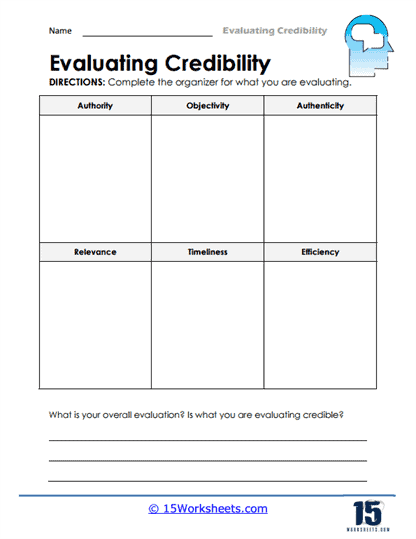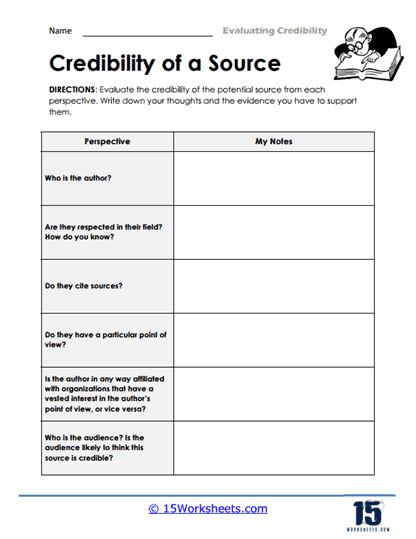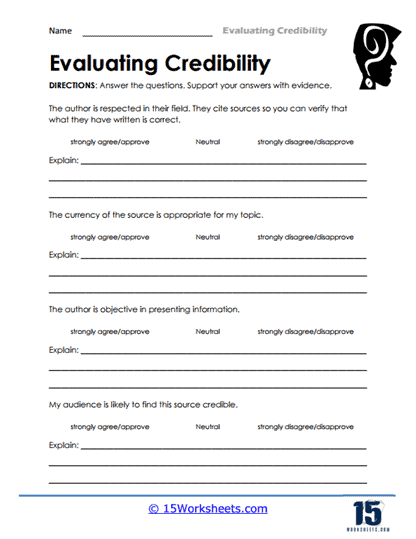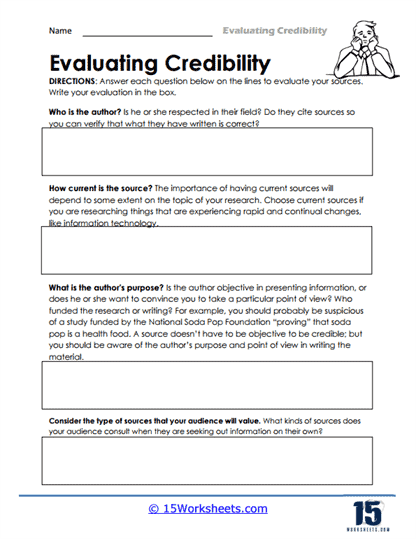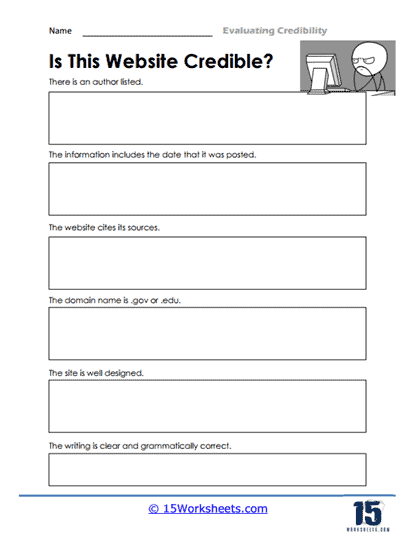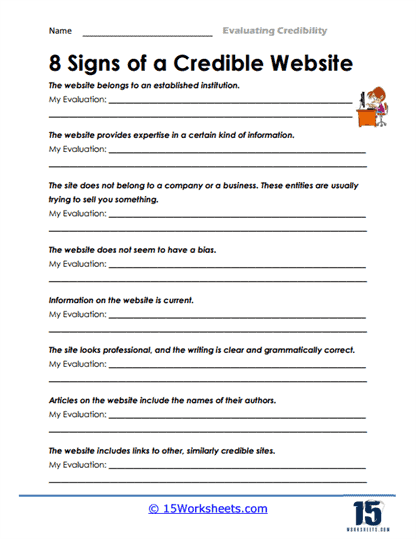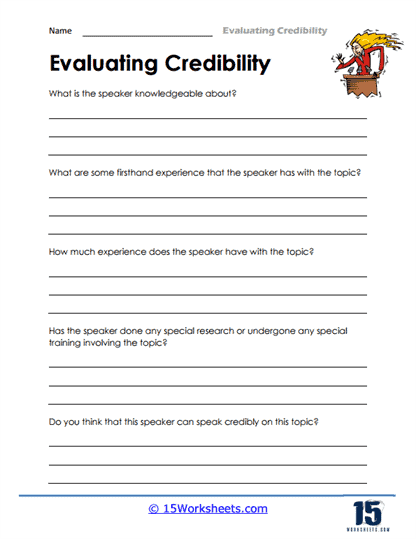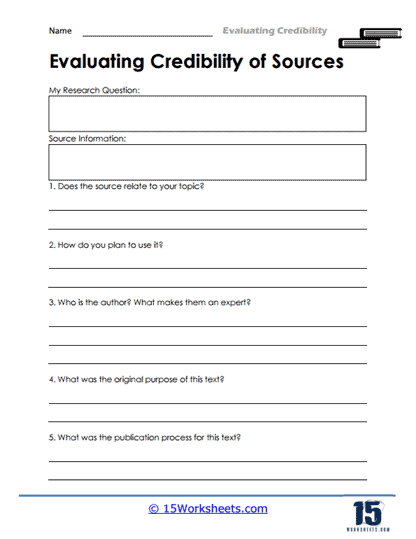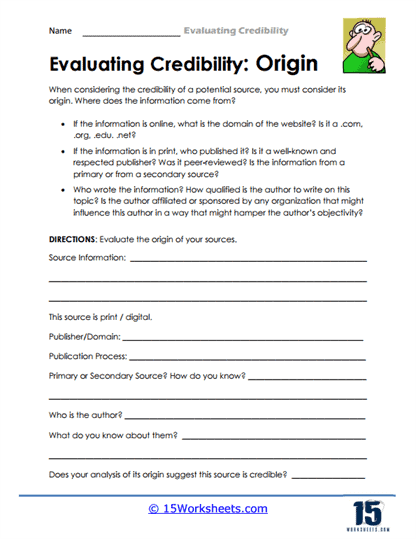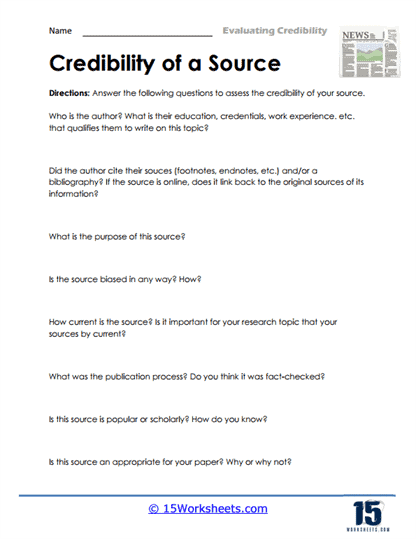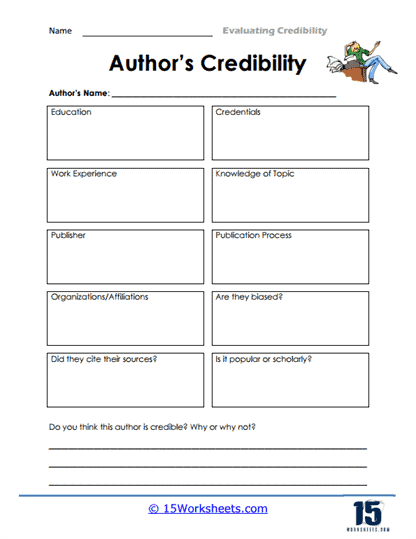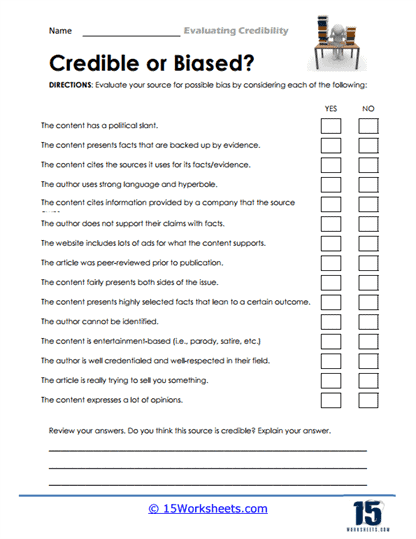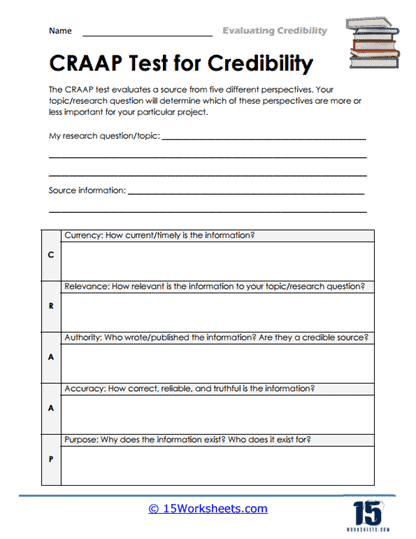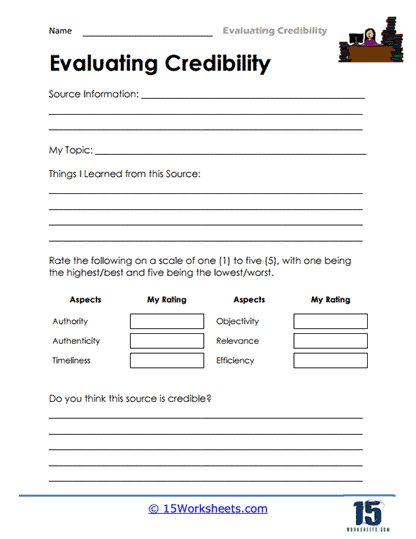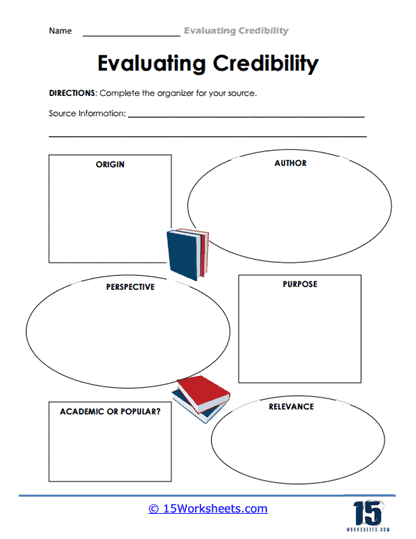Evaluating Credibility Worksheets
All About These 15 Worksheets
Evaluating credibility is a crucial skill in today’s information-rich world, where students need to be discerning consumers of information. This series of 15 worksheets on Evaluating Credibility is designed to help students develop their critical thinking abilities and assess the reliability, accuracy, and trustworthiness of various sources of information. Each worksheet within this series focuses on different aspects of evaluating credibility, equipping students with the tools they need to navigate the vast sea of information effectively. Through these worksheets, students will:
- Evaluate the credibility of information based on their authority, objectivity, authenticity, relevance, timeliness, and efficiency;
- Thoroughly investigate the credibility of various sources;
- Answer questions in writing prompts to help them evaluate the credibility of authors and the information they provide;
- Learn how to investigate the credibility of websites or information found in the web;
- Distinguish credible sources from biased;
- And know how to use the CRAAP Test for credibility.
These Evaluating Credibility worksheets equip students with essential skills for navigating the information landscape effectively. By engaging with these worksheets, they will develop critical thinking abilities, enhance their media literacy, and become discerning consumers of information. They will be better prepared to evaluate the credibility of sources, make informed decisions, and participate responsibly in today’s information-driven society.
How to Evaluate the Credibility of a Text
When you read any article, blog, or piece of text, the information you are reading must be accurate. One way to ensure this is to evaluate the credibility of the text. After all, not everything you read on the internet is true. In fact, false information is prevalent on web pages since there is no accountability these days.
Hence, it is the job of the author and reader to evaluate the credibility of a text. Any webpage you find on Google can give itself an artificial logo, but that does not mean that it is a credible source to extract information. Fact-checking is essential, so you should always choose valid and reliable information.
Where Was the Source Published?
When trying to evaluate the credibility of a text, one of the first things you need to do is understand the origin of the source. Have experts evaluated the text within the field, or has a university press taken the responsibility of publishing it? Any text that scholars and experts have backed up can be considered credible.
Moreover, you must check to see if the text has been published online. This is not a bad thing, but it just means that you have to go the extra mile to check who published it, the reason behind the text, and how you can use the information provided. If you have any doubts about the text you found, discuss it with your instructor. If this is not an option, it would be safer to look for another piece of text.
Who is the Author?
Find out who the author of the text is. Then, run a little online search so that you can find out more about the author. Look for information that could tell whether the author was affiliated with some credible institution, like a university. Moreover, look for other forms of text they have written and published.
Cite the databases that will inform your readers of the number of times the source has been used and cited by academics other than yourself. This will help prove that the text is credible and reliable.
Is the Text Appropriate for its Field?
Everyone wants to believe that everything on the internet is relevant, but the truth is that in some disciplines, text can become outdated quickly. This could be because new research is always coming in, and new updates are being made regularly. However, you will always find some texts that remain relevant for long periods.
If you want to evaluate the credibility of a text, start by searching for other topics within your field so that you can find related sources. Look for sources that have been cited by multiple people and those that will provide a strong picture of intellectual value and relevance.
Who is the Audience?
To determine the credibility of a text, you must know who the intended audience is. Is it a scholarly audience or a mass-market? If your text is for scholarly readers, you will likely find a bibliography that can be used to find other relevant sources.
Will the Text be Used as a Primary or Secondary Source of Information?
If you are unsatisfied with the text you found as you think it does not meet the expectations of scholarly work, do not be too fast to disregard it.
You can always use the information as a primary source which means information that needs to be analyzed rather than using it as a secondary source- information that is used to support analysis.

